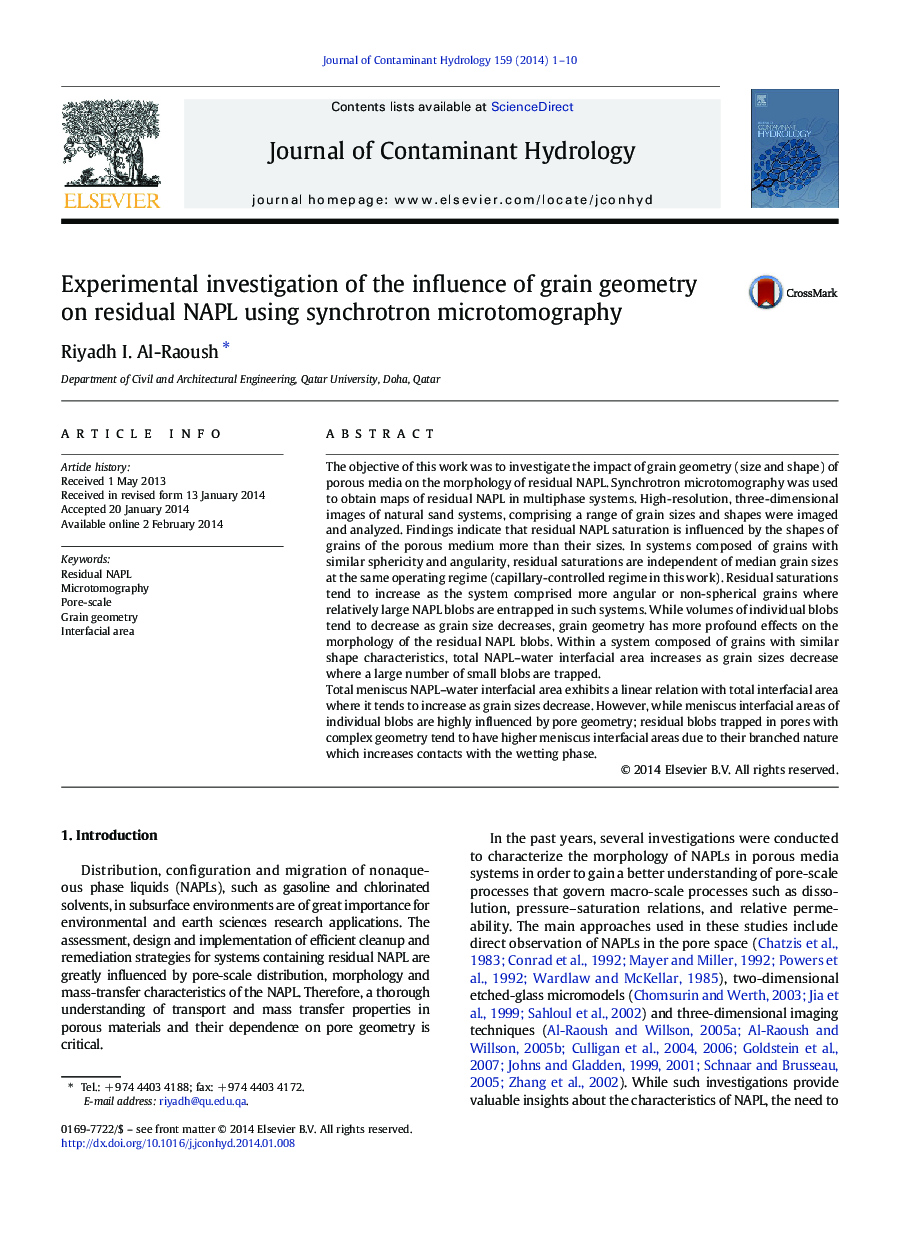| کد مقاله | کد نشریه | سال انتشار | مقاله انگلیسی | نسخه تمام متن |
|---|---|---|---|---|
| 4546600 | 1627048 | 2014 | 10 صفحه PDF | دانلود رایگان |

• We investigated the impact of grain geometry on characteristics of residual NAPL.
• Synchrotron microtomography was used to obtain 3D images of the systems.
• Residual NAPL saturation is influenced by shapes of particles of the porous medium.
• Meniscus interfacial areas are highly influenced by grain geometry.
The objective of this work was to investigate the impact of grain geometry (size and shape) of porous media on the morphology of residual NAPL. Synchrotron microtomography was used to obtain maps of residual NAPL in multiphase systems. High-resolution, three-dimensional images of natural sand systems, comprising a range of grain sizes and shapes were imaged and analyzed. Findings indicate that residual NAPL saturation is influenced by the shapes of grains of the porous medium more than their sizes. In systems composed of grains with similar sphericity and angularity, residual saturations are independent of median grain sizes at the same operating regime (capillary-controlled regime in this work). Residual saturations tend to increase as the system comprised more angular or non-spherical grains where relatively large NAPL blobs are entrapped in such systems. While volumes of individual blobs tend to decrease as grain size decreases, grain geometry has more profound effects on the morphology of the residual NAPL blobs. Within a system composed of grains with similar shape characteristics, total NAPL–water interfacial area increases as grain sizes decrease where a large number of small blobs are trapped.Total meniscus NAPL–water interfacial area exhibits a linear relation with total interfacial area where it tends to increase as grain sizes decrease. However, while meniscus interfacial areas of individual blobs are highly influenced by pore geometry; residual blobs trapped in pores with complex geometry tend to have higher meniscus interfacial areas due to their branched nature which increases contacts with the wetting phase.
Journal: Journal of Contaminant Hydrology - Volume 159, April 2014, Pages 1–10